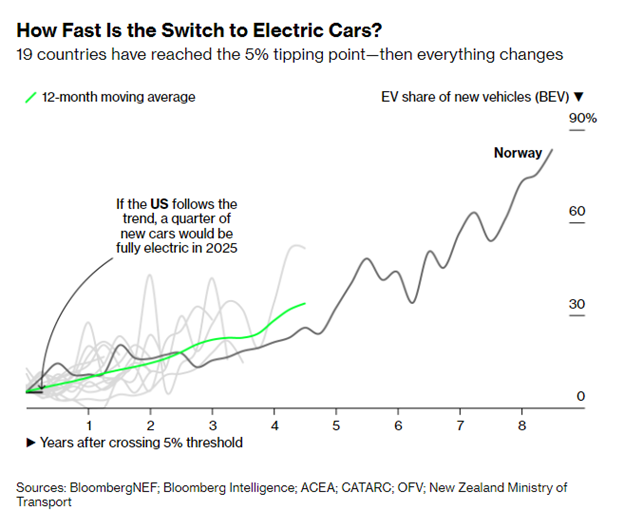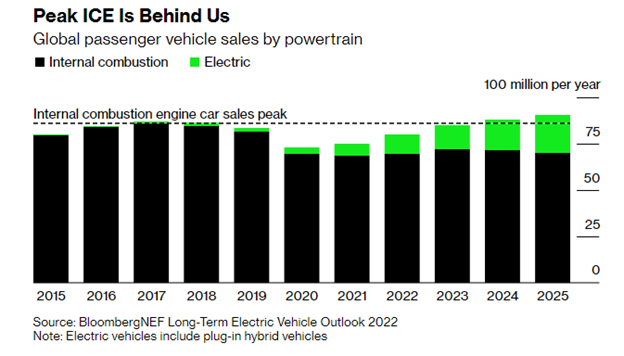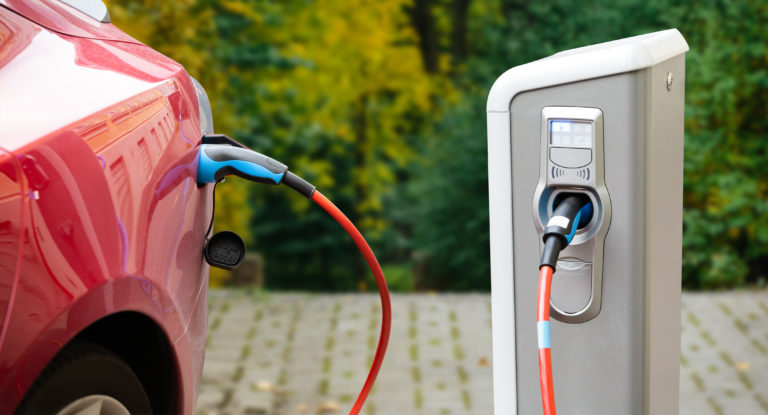Electric vehicles (EVs) are gaining in popularity. Recently, the United States reached a new milestone: 5% of all new car sales were vehicles that are powered by electricity only. Analysts at Bloomberg say this is a “tipping point” for EV cars in the United States. If that stat doesn’t stop and make you think, according to the International Energy Agency, the sale of EVs has tripled in the last two years.

In analyzing data from 19 countries, Bloomberg found that once EV sales hit 5%, or the “tipping point,” the trend of buying EVs took off. If the U.S. follows that trend, analysts say 25% of new car sales could be electric by the end of 2025.

According to Bloomberg, of the one billion vehicles on the road in 2022, more than 27 million will be electric passenger vehicles and two million will be electric buses and electric commercial vehicles.

So Why Are EVs Gaining in Popularity?
Reduced Pollution
Many states (and countries) are cracking down on greenhouse gases, and an electric vehicle emits no tailpipe pollutants, unlike conventional combustion motors. EVs run on rechargeable battery packs, which eliminates the need for gasoline in a completely electric model.
Right now, the transportation sector accounts for 30% of the United States’ total energy needs, and 70% of the United States’ petroleum consumption. It’s no wonder that many automotive manufacturers are turning to EVs to help combat greenhouse gas emissions.
Government Policies
Throughout the country, many states are setting electric vehicle sales goals to help reduce pollution, while creating electric vehicle charging station goals to support the increase in EVs.
For example, in New Jersey, Governor Phil Murphy signed Senate Bill S3223 into effect in July of 2021, mandating new multi-family dwellings of more than five units to have 15% of off-street parking spaces pre-wired for electric vehicle charging stations. If you are a property owner in the state of New Jersey, take note of this new law.
In New York State, Governor Kathy Hochul signed legislation in 2021 that set a goal for all passenger vehicles sold in New York State to be zero-emissions by 2035. Off-road, medium-duty, and heavy-duty vehicles are to follow by 2045. When it comes to charging stations in New York, bill S7406C, which has passed the Senate, would require EV charging stations and electric vehicle capable parking spaces at certain new buildings. If you are a property owner in New York, keep watch of this bill as it makes its way through the Assembly.
Pennsylvania has issued an Electric Vehicle Roadmap, committing to at least 30% of new medium-duty and heavy-duty truck sales from zero-emission vehicles by 2030, and 100% by 2050.
In Maryland, House Bill 1146 requires that all new residential construction of townhouses and multifamily units must include EV charging stations. It takes effect on October 1, 2022.
Meanwhile, in August 2021, President Biden issued an Executive Order that sets a new target of making half of all new vehicles sold in 2030 to be zero-emissions.
With government policies, financial incentives, and increasing environmental concerns, the EV revolution seems inevitable. How can your business get up to speed and capitalize on the opportunities available?
Take Charge with EV Charging Stations
Types of Charging Stations
To support the growing number of electric vehicles on the market, as well as comply with government policies in your region, adding an EV charging station to your property or business is the obvious next step.
Right now, there are three categories of charging stations on the market. Each type of charging station has its own advantages and disadvantages.
Level 1 – This is the slowest charging available. Level 1 chargers use a 100-volt outlet, like a standard plug at a residential home. One overnight charge will yield about a 40-mile drive. If you’re looking to install a charging station at your business or property, you’ll want to consider a Level 2 or 3 charging station.
Level 2 – Level 2 charging stations are the most common types of EV charging stations. These chargers use 240-volt outlets, like dryers or air conditioners, and are used in both commercial and residential settings. A full charge takes about five hours. These types of chargers are perfect for public places where people will be spending time, like at universities and schools, restaurants and breweries, hotels, hospitals, stadiums, and shopping malls.
DC Fast Chargers (DCFC) – DCFCs use 480-volt outlets and can give an EV a full charge in about one hour. These are the most expensive charging stations, and often only found in commercial settings or government-mandated areas. Because these chargers can charge an EV quickly, they make great additions to gas stations and rest stops.
Energo Can Help You Take Charge
As the trend for buying EVs increases, adding EV charging stations to your property just makes sense. From navigating the various financial incentives and rebates available, to site planning, installation, and maintenance, Energo can help guide your business through the entire process. EV charging stations can help increase your property value, attract and retain more customers, employees, and tenants, and can also serve as an extra source of revenue.
If you’re interested in seeing if EV charging stations are right for your business or property, reach out to an Energy Advisor for more information.

